Technology
Apple’s first smart screen plans are taking shape, but the robotic model faces delays
Apple is making big moves in the smart home market, with plans to release not one but two new smart screens. If you’re excited about the idea of an Apple smart display in your home, there’s good news, but it also requires a bit of a wait. Last October, tech journalist Mark Gurman revealed that […]
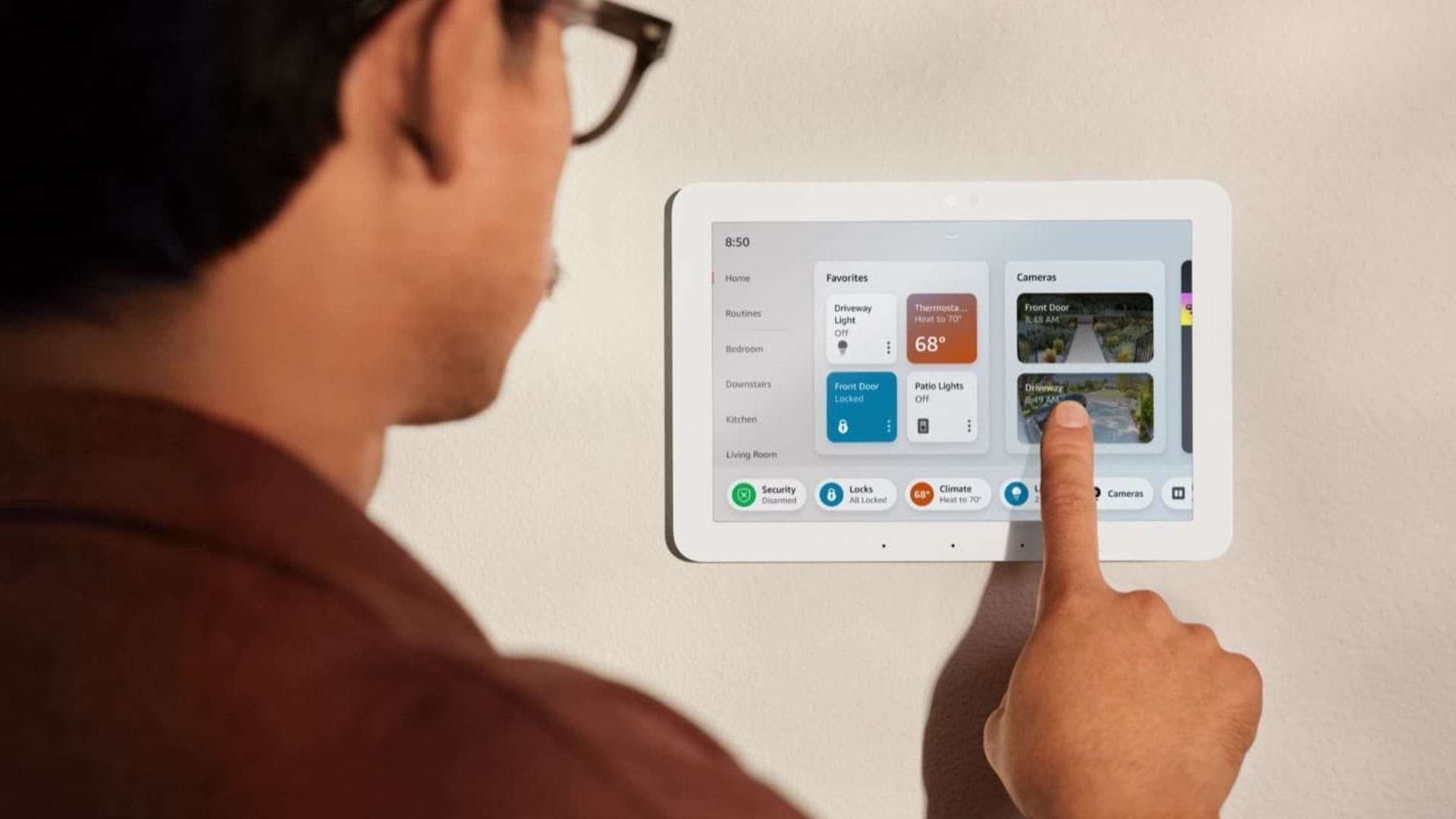
Apple is making big moves in the smart home market, with plans to release not one but two new smart screens. If you’re excited about the idea of an Apple smart display in your home, there’s good news, but it also requires a bit of a wait.
Last October, tech journalist Mark Gurman revealed that Apple was developing two different smart screens to strengthen its position in the connected home space. In his latest Power On newsletter, Gurman has shared an update on the progress.
The simpler model might arrive by the end of the year
The first smart screen, known internally as the J490, could still be launched before the end of this year. It’s expected to be a more affordable, iPad-style screen that’s easy to use and fits into your daily routine. Apple is testing features like magnetic wall mounts, allowing you to place the screen wherever you need it most in your home — perhaps in the kitchen, living room, or even your hallway.
The J490 is designed to let you stream Apple TV Plus, make FaceTime calls, and access apps like Calendar and Notes. It will run on a new operating system called homeOS, which is based on the existing tvOS used by Apple TV.
This model is aimed at everyday users who want a simple yet smart way to connect with Apple’s ecosystem. Think of it as Amazon’s Echo Show but with more seamless integration into Apple devices.
However, the final design of the J490 is still uncertain. Apple has run into challenges, especially with Siri’s development. According to Gurman, these Siri-related issues have created delays and might lead to some planned features being removed from the device to get it out quicker.
The robotic model won’t arrive until at least next year
Once the J490 is released, Apple will focus on the second model — a far more advanced smart screen called the J595. This version is unlikely to be available until at least late 2026, possibly even later, depending on how smoothly the J490 launch goes.
What sets the J595 apart is its robotic arm. This smart display is designed to move around your desk or table, adjusting its position based on where and what you’re doing. It can follow your movements, making video calls and media viewing much more dynamic.
Apple also plans to give the J595 its own “unique AI personality”, making it more interactive than a standard smart screen. It will use Apple Intelligence to assess its surroundings, identify users, and understand nearby activities.
This version is targeted at more advanced users and will likely cost around US$1,000. Its main features include home security monitoring, high-quality audio for media playback, and advanced video conferencing tools.
While Apple had some bold ideas for this model, Gurman reports that a few features have been held back to ensure the product launches on time. These features may return in future updates or versions of the device.
Both models will offer smart home control
Like Amazon’s Echo Show and Google’s Nest Hub, both Apple smart screens allow you to easily control smart home gadgets. But Apple aims to go further.
Using Apple Intelligence, the screens are expected to offer “home automation on steroids”. That means more accurate control over your devices, apps, and media — all tailored to your habits and needs.
Even though the J595 sounds more futuristic, it won’t be the first robotic screen. Amazon introduced its US$1,499 Astro robot back in 2021. However, that product is still only available in the United States and only through invitation.
If launched as planned, Apple’s version could be the first robotic smart display to hit the mainstream. For now, you’ll have to wait and see how Apple handles the delays and whether the J490 makes it to market before the end of the year.
Technology
Is NBCU Bringing Sports Back To Cable, Comcast’s New Streaming Store Features A Cast Of Hundreds — TVREV
2. Comcast’s New Streaming Store Features A Cast Of Hundreds Comcast launched something called SteamStore this week, which is essentially its version of Amazon’s Channels store, or, more directly, Verizon’s +play: a way for customers to add streaming services from a convenient hub and to also purchase bundles of their most watched services. It is, […]
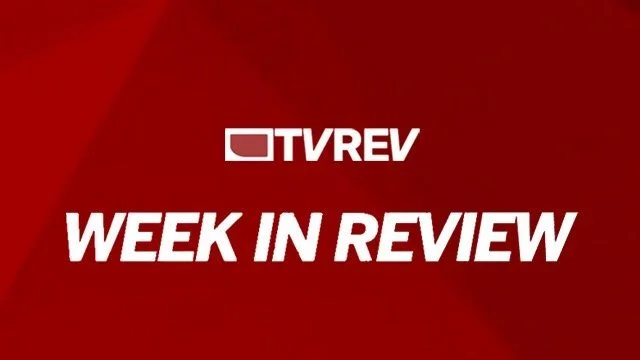
2. Comcast’s New Streaming Store Features A Cast Of Hundreds
Comcast launched something called SteamStore this week, which is essentially its version of Amazon’s Channels store, or, more directly, Verizon’s +play: a way for customers to add streaming services from a convenient hub and to also purchase bundles of their most watched services.
It is, depending on your POV, either an admission that streaming is the future or a way to meet your customers where they are. Either way you look at it though, it’s a smart move, one that is likely to be appreciated by the mass of Xfinity subscribers who are not in the Early Adopter cohort.
But that’s not what is interesting to me about the announcement.
What’s interesting is that there are 450 apps in the offering, including some 100 niche subscription services who clearly have enough runway for Comcast to include them in its offering.
That is a lot of niche subscription services.
Why It Matters
I suspect many of them are low-priced enough that their subscribers don’t bother to cancel, either because they want to support that type of content, forget they have that particular $3.99/month subscription or keep thinking they’ll find the time to watch something on there.
That said, they all also likely have passionate and sizeable fan bases who turn to Reddit and Discord to discuss the content and the overall direction of the service. They are part of what we’ve been calling “Feudal Media”–small unconnected islands of content, each with its own culture, in-jokes and celebrities.
Now what’s notable here is that there are over 100 of these services. Not 10 or 15, but 100. That’s a lot of little bubbles.
Comcast’s plan makes a lot of sense in that people generally like bundles, or the smaller and simpler bundles offered around streaming, anyway..
It’s one less thing to worry about.
Plus they get a single interface, with all the services they subscribe to included, which is much better experience than the industry seems to realize—if there’s one complaint I hear most often, it’s that it is far too difficult to find anything in streaming, even if you go in knowing what you want to watch.
And that if you don’t, going back and forth from app to app to see what they recommend is way too much effort.
Hence the bundle and the popularity of companies like Bango and MyBundle.
One more note on Comcast’s SteamStore: many of the bundles on offer—take the $15/month StreamSaver, for instance— feature the ad-supported versions of the apps that are being bundled, in this case, Peacock and Netflix.
This is notable in that it is a thinly veiled secret that the big SVOD apps are all struggling to build up their ad-supported subscriber base in the US.
The “why” on that is not much of a mystery: the price gap between ad-free and ad-supported remains relatively small—maybe $10/month. And many of their new subs go in thinking they’ll only subscribe for three months or so—just long enough to watch whatever series got them to subscribe in the first place—and so $30 to watch it without ads is not that big a deal.
Especially given that “watch all your favorite shows without ads” has been Netflix’s main selling proposition for the past decade and it’s a hard behavior to change.
So there’s that and the fact that there are people who’d happily pay large sums of money to avoid ads, and I wonder whether the greater savings provided by this type of bundling will lead to a noticeable bump in the size of their ad-supported audiences.
Let’s just say I am skeptical.
What You Need To Do About It
If you are Comcast, well done. This is a smart move and given that you do own a goodly share of the broadband market in the US, giving your customers what they want is a wise decision.
If you are one of the streaming services looking to grow your ad-supported subscriber base, remember that word-of-mouth is still a powerful driver, and so making the experience a good one is key. That means resisting the urge to jam more ads into every break and making sure the same three ads don’t run all the time either.
Something to keep in mind.
If you are an Xfinity subscriber, this is definitely something worth checking out especially if you’ve been looking for a more unified interface.
You’re welcome.
Technology
Forget Whoop: I found a worthy fitness tracker alternative with none of the subscription fees
ZDNET’s key takeaways The Amazfit Helio Strap is available now for $99. As a smartwatch alternative, the strap offers virtually all the same health tracking features via the robust Zepp app, with over a week of battery life. The fabric strap isn’t made of exceedingly high quality materials, but luckily can be easily replaced. Amazfit, […]


ZDNET’s key takeaways
- The Amazfit Helio Strap is available now for $99.
- As a smartwatch alternative, the strap offers virtually all the same health tracking features via the robust Zepp app, with over a week of battery life.
- The fabric strap isn’t made of exceedingly high quality materials, but luckily can be easily replaced.
Amazfit, makers of such smartwatches as the Bip 5 and the new Balance 2, recently released its Helio Strap, a fitness tracker that has all the core functions of a smartwatch, but in an ultra-minimal form: no watch face, no decorative elements (and no subscription).
The strap is about as simple as you can get — just a solid black band with the tracking component below it. Unlike other popular straps like the Whoop 4.0 (or new 5.0), there’s no buckle, making the whole thing incredibly light at just 20 grams without the strap.
Also: I swapped my Apple Watch Ultra for this big-screen Garmin that’s easier to read
This results in a device that’s not only affordable at $99, but also extremely battery efficient — lasting over 10 days on one charge for normal use and up to 25 days in battery saver mode.
I’ve been wearing the Helio strap for the past month now, and one of the main reasons why it works so well is because the app that Amazfit’s smartwatches work with — Zepp, for Android and iOS — is good enough to carry, providing all the useful health and fitness metrics you could want, including workout tracking, heart health, and sleep stats.
Also: The Apple Watch Ultra 2 is the premium smartwatch I prefer (especially at $150 off)
The lack of a watchface also eliminates the inherent distraction of looking at it in the middle of a workout — something I find myself constantly doing any time I wear a smartwatch. By relegating everything to the app, you can put your phone away and not worry about checking it until afterwards.
The app also has its share of unique metrics intended to provide deeper insights into health behavior. For example, the BioCharge feature generates a number for you in the morning (a score out of 100) that tells you what kind of shape you’re in for the coming day, with the score changing as you progress through the day.
This number is generated from the quality of sleep you got, what kind of day you had yesterday, your resting heart rate, your activity level, and your stress. For example, if you had a stressful day previously and didn’t sleep well, your BioCharge will start out low, putting you at 60 at the start of the day. A great night of rest, however, and you might start the day out at 100.
The app mentions that it needs at least seven days of data to project an accurate assessment, and I found this to be more or less accurate, not just with BioCharge but also with sleep data and PAI, Zepp’s other proprietary health score.
Also: Why Whoop’s policy change has fans fuming – and what it’s doing about it
PAI, or “personal activity indicator,” awards you points every day based on your cardiorespiratory measurements. The intent is to get a weekly score of 100 or greater. This can be hard to do, as the better shape you’re in, the fewer points your workouts generate, pushing you to work harder.
The algorithm here is successful not in that it gives you absolutely perfect data, but because it’s so good at pushing you with just the right amount of what’s realistically achievable. If you’re someone who just needs a nudge to keep your fitness in check, this metric alone is a good way to keep tabs on your activity level for the week.
The app also gives you the option to track what you eat by snapping photos of your food and letting the AI break down caloric values based on the photo. My first thought when hearing this was, ok, a photo of an apple it can do, but what about something more complicated?
So, I put it to the test. I made a big salad with a handful of ingredients, and snapped a photo. After a few seconds, the AI broke down the contents of the salad with surprising accuracy, even spotting the few pickled jalapenos that were thoroughly mixed in.
Also: Samsung Galaxy Watch 8 vs Pixel Watch 3: Which Android smartwatch should you buy?
Personally, I don’t need to track my food this way since I’m already aware of my current macros, but if this is something you’re looking for, I found it to be very easy and surprisingly accurate.
Even if it’s not to the letter (it can identify food very well, but it can’t always accurately determine volume or portions) the ball park number can be incredibly helpful, showing you if there’s an imbalance in your fat, protein, or carb macros.
Other features in the app include a plethora of sleep insight stats, including sleep apnea risk, stress, skin temperature, exertion load, steps, weight, and BMI, and support for dozens of training modes.
I’m talking a lot about the app here because ultimately, that’s what matters most to the Helio strap, as a window into fitness tracking through Zepp. Of course, you don’t have to use the strap as a standalone device; in fact, Amazfit’s current marketing positions it as a complementary component to the Balance 2, its latest smartwatch.
Since both devices access the same app, swapping between them ideally provides a seamless tracking experience, allowing one to pick up where the other one left off. (Plus, if you can’t sleep with a watch on, the Helio strap is a legit alternative.)
Also: Finally, a budget smartwatch that’s just as durable as my Garmin (and it’s on sale)
Lastly, I’ll mention that the Helio strap works just fine without a subscription, but if you want deeper insights and access to more personalized metrics, you can subscribe to Zepp’s Aura Premium.
This part of the app resembles the VIP lounge, with weekly reports, monthly health analyses, sleep assessments, and a host of audio and guided mediation features.
As for things Amazfit could improve, one of the most obvious is the strap’s physical form, which, to be expected, is pretty basic. My continual wear after a few weeks resulted in some slight fraying of the fabric band around the velcro end, and I’d imagine after a certain amount of sweaty workouts, you’ll want to replace it anyway.
ZDNET’s buying advice
If you’re interested in fitness tracking but want something minimal or only want to wear a device during workouts, the Amazfit Helio Strap is a solid option. At $99, it comes with the full suite of features in the Zepp app, which is the real secret sauce here.
I actually like the look of the ultra-minimal black strap, and it couldn’t be more distraction-free. If you want a smartwatch, but also like the idea of the strap for certain activities, you can get both the Balance 2 and Helio strap in a bundle deal for $379.
Technology
Wearable Tech in Sports: What’s Next?
Share Share Share Share Email A sprinter is aware of their stride. The sleeve of a goalkeeper records pressure. It is not science fiction, but a game of today. Wearable technology is not only monitoring data; it is rewriting the way athletes train, recuperate, and conquer. To fans, bettors, and analysts, this entails an additional […]
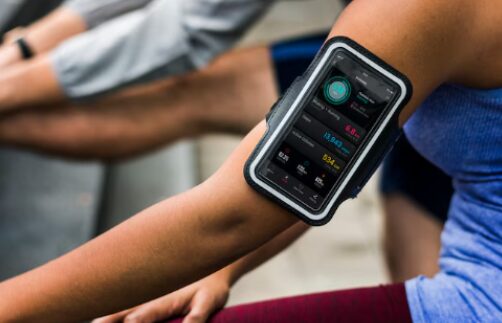
A sprinter is aware of their stride. The sleeve of a goalkeeper records pressure. It is not science fiction, but a game of today. Wearable technology is not only monitoring data; it is rewriting the way athletes train, recuperate, and conquer. To fans, bettors, and analysts, this entails an additional level of knowledge. Performance is not only about talent anymore; it is about data on the skin.
Smart Clothing for Enhanced Performance
Sports clothing is not inert anymore. The sensors are being incorporated into bright fabrics that can measure muscle activation, breathing rhythm, and posture shifts. Platforms like Melbet Mongolia are already paying attention to how this kind of data might shape betting odds and predictions. This clothing provides real-time information about the body’s condition, without taking away the ability to take action.
The equipment also gets adapted. Some prototypes change temperature or compression according to the intensity. Trainers no longer have to guess how an athlete is feeling; they have numbers. It is no longer a matter of looking out at the signs; it is reading the story off the body. This is not a sexy tech; it is practical. And it is becoming a necessity.
Biometric Monitoring in Real Time
Wristbands and skin patches are becoming a 24-hour health companion. They are not merely measuring heartbeats; they are putting physiology into practical measures.
This is what wearable monitors of the highest quality track now:
- Heart rate variability: Can be used to identify fatigue or overtraining before a performance decline.
- Sweat analysis: Indicates water and electrolyte status during play.
- Respiration rate: It detects changes in endurance or stress in times of high pressure.
- Skin temperature: Signals a possible overheat or sickness before symptoms occur.
These figures are gold to the bettors: they provide hints about the state of an athlete that were not visible before.
Data-Driven Coaching and Feedback
It is not only that wearables are providing athletes with insights, but they are also giving coaches an entirely new perspective. Decisions on training are no longer based on hunches and instincts. It is algorithms, body data, and updates second by second: strategy has become a matter of numbers. And those figures are transforming the construction of skills and risk management.
AI Integration in Training Devices
No more stopwatch drills; now AI is assisting athletes in optimizing every move to achieve peak performance. Smart devices, such as smart insoles or arm sensors, gather data and learn. They pick up on trends in fatigue, quality of repetitions, and timing gaps that even elite coaches can overlook—the consequence: more individualized and predictive training.
This represents an additional level of trustworthiness for bettors. An athlete with an AI analysis is less prone to perform poorly unexpectedly. There are also long-term benefits being realized by coaches. Players who used to stagnate during the season are now performing at their best at the end of the season, as their training is adapting in real time. It is not a matter of working harder, but working sharper.
Virtual Reality for Skill Simulation
VR has shifted out of the realm of video game novelty into a serious preparatory tool. Teams no longer have to step onto a field to simulate full match conditions, including crowd noise, lighting, and pressure. Quarterbacks train decision trees. Combatants train in noncontact timing. And all the time with sensors on to measure the speed and accuracy of the reaction.
This is different for recovery athletes. They can rehearse mentally and be physically healed at the same time. The mind remains active, and the body takes a break. This technology not only sustains performance, but it also creates it in ways that are unexpected. And as to bettors? What you are seeing is a whole new method of evaluating the readiness before game day.

Fan Experience Through Athlete Wearables
Fans no longer only watch games; they watch the athletes’ bodies speak. As wearables produce real-time data, fans can see internal metrics that were previously only available to coaches and medical teams. Heart rate in a penalty shot. Sprint speed in front of a goal. The final turn acceleration. It adds an extra dimension of drama, and numbers appear live on screen.
This technology is a goldmine for the bettors. You don’t see performance; you see preparedness, exhaustion, and strain under stress. This feed is already being incorporated into live betting interfaces through apps. It makes each second a point of data that either proves or kills your bet. It is all-absorbing, emotional, and dangerously addictive.
The Future of Regulation and Ethics
The additional data implies additional questions: who is the owner, who benefits, and who is the defender of the athlete? Wearables are becoming increasingly sophisticated, and privacy concerns are looming ahead. Leagues, unions, and regulators will battle it out. The body now is satisfied–satisfied must have regulations.

Technology
Alphabet and AI stocks nudge Wall Street to more records | News, Sports, Jobs
NEW YORK (AP) — Wall Street inched to more records on Thursday as gains for Alphabet and artificial-intelligence stocks helped make up for Tesla ‘s steep tumble. The S&P 500 added 0.1% to its all-time high set the day before. The Dow Jones Industrial Average fell 316 points, or 0.7%, while the Nasdaq […]

NEW YORK (AP) — Wall Street inched to more records on Thursday as gains for Alphabet and artificial-intelligence stocks helped make up for Tesla ‘s steep tumble.
The S&P 500 added 0.1% to its all-time high set the day before. The Dow Jones Industrial Average fell 316 points, or 0.7%, while the Nasdaq composite rose 0.2% to its own record.
Alphabet climbed 1% after the company behind Google and YouTube delivered a fatter profit for the latest quarter than analysts expected. It’s leaning more into artificial-intelligence technology and said it’s increasing its budget to spend on AI chips and other investments this year by $10 billion to $85 billion.
That helped push up other stocks in the AI industry, including a 1.7% rise for Nvidia. The chip company was the strongest single force lifting the S&P 500 because it’s the largest on Wall Street in terms of value.
But an 8.2% drop for Tesla kept the market in check. Elon Musk’s electric-vehicle company reported results for the spring that were roughly in line with or above analysts’ expectations, and Musk is trying to highlight Tesla’s moves into AI and robotaxis.
The focus, though, remains on how Musk’s foray into politics is turning off potential customers, and he said several rough quarters may be ahead as “we’re in this weird transition period where we’ll lose a lot of incentives in the U.S.”
Stocks have broadly been rallying for weeks on hopes that President Donald Trump will reach trade deals with other countries that will lower his stiff proposed tariffs, along with the risk that they could cause a recession and drive up inflation. The record-setting gains have been so strong that criticism is rising about how expensive stock prices have become. That in turn puts pressure on companies to deliver solid growth in profits in order to justify their gains.
Chipotle Mexican Grill also helped weigh on the market despite delivering a profit for the spring that topped analysts’ expectations. The restaurant chain’s growth in revenue came up short of expectations, and its stock fell 13.3%.
IBM dropped 7.6% even though it likewise reported a stronger profit than expected. Analysts pointed to slowing growth in its software business, among other things underneath the surface.
American Airlines lost 9.6% despite reporting a stronger profit than expected. The company said it expects to report a loss for the summer quarter. It also gave a forecast for full-year results that had a wide range: between a loss of 20 cents per share and a profit of 80 cents per share, depending on how the economy performs.
Reactions in the stock market have generally been stronger than usual when companies beat or miss their profit targets by a wide margin, according to Julian Emanuel at Evercore.
Other extreme moves have also been roaring underneath the market’s surface, including huge swings for “meme stocks.” Those are stocks where traders are looking to jump in amid online cheerleading and ride it higher, before a halt in momentum leaves some investors holding the bag.
Opendoor Technologies rose 5.7% following a manic stretch where it swung by at least 10%, up or down, in 10 straight days.
Such swings, though, haven’t been showing up in overall market indexes, which have been gliding recently. The S&P 500 hasn’t had a day where it moved by at least 1% in a month.
All told, the S&P 500 rose 4.44 points to 6,363.35. The Dow Jones Industrial Average fell 316.38 to 44,693.91, and the Nasdaq composite rose 37.94 to 21,057.96.
In the bond market, Treasury yields held relatively steady following the latest signals that the U.S. economy seems to be holding up OK despite pressures from tariffs and elsewhere.
One report said that fewer U.S. workers applied for unemployment benefits last week, a potential signal of easing layoffs. A separate report from S&P Global suggested growth in U.S. business activity accelerated in July, and the preliminary results easily topped economists’ expectations.
That helped solidify expectations on Wall Street that the Federal Reserve will hold interest rates steady at its next meeting next week, even though Trump has been agitating angrily for cuts. The European Central Bank, which had earlier been cutting its rates, also held steady on Thursday as it waits to see how Trump’s tariffs affect the economy.
The yield on the 10-year U.S. Treasury note briefly approached 4.44% in the morning before pulling back to 4.40%, where it was late Wednesday.
In stock markets abroad, indexes rose across much of Asia and Europe. Tokyo’s jump of 1.6% and London’s rise of 0.8% were two of the bigger gains.
Technology
Sim Gaming – They have an expo for that
Sim Gaming Expo 2025 will debut as a first event for simulation gaming and technology enthusiasts on September 5 to September 7 near Chicago. The inaugural event takes place at the Schaumburg Renaissance Convention Center in Schaumburg, Illinois. Bringing together fans, creators, and brands in the simulation gaming and technology world, the Sim Gaming Expo […]

Sim Gaming Expo 2025 will debut as a first event for simulation gaming and technology enthusiasts on September 5 to September 7 near Chicago.
The inaugural event takes place at the Schaumburg Renaissance Convention Center in Schaumburg, Illinois. Bringing together fans, creators, and brands in the simulation gaming and technology world, the Sim Gaming Expo is the first event of its kind to showcase all genres of simulation gaming, virtual reality, esports, gaming lifestyle, and cutting-edge tech under one roof. It’s the first time the event is taking place.
Created “for fans by fans,” the Sim Gaming Expo 2025 will feature immersive experiences, interactive panels, and a chance to meet industry leaders, and content creators. Attendees will get hands-on with the latest in sim racing, flight simulators, VR innovations, and so much more. As organizers gear up for the event, they anticipate a strong lineup of exhibitors, all eager to share their products and innovations with the simulation enthusiast community.
“We’re so excited about it. We’re trying to attract PC enthusiasts, tech fans, nerds and gamers,” said Anzaldo in an interview with GamesBeat. “I’ve always been a big motor sports fan, and I enjoyed many of the early sim racing titles, from the DOS era to the modern day.”
Back in 2013, he joined sim racing and started a league of his own in 2014 and ran that for about 10 years.
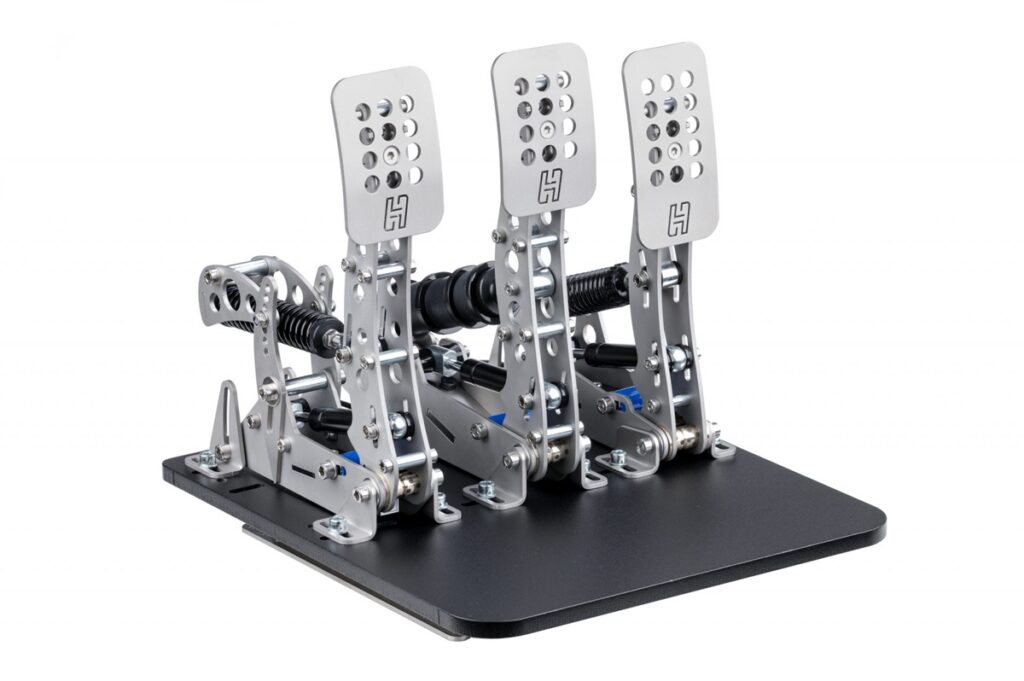
“It was through that experience that I just saw a huge void in North America where, in my opinion, sim racing was not properly being represented,” Anzaldo said. “And then just looking at the simulation genre as a whole, it feels somewhat fragmented. You know, we have a lot of subgenres. And there really was nothing that was representing all of these genres of simulations as a whole, or under one roof. That is what drove me to expand.”
He added, “There’s a huge community that does flight sims and farming and trucking and sci fi, and there’s, there’s just so much tech and hardware that goes into the immersion from these games that I felt there was so much crossover,” Anzaldo said. “We decided to bring all these communities together and have one big celebration.”
These aren’t all just about fun and games. They lean into learning and business. Flying flight sims, for instance, represents a great way to learn how to fly. An estimated 15 million people played the 2020 version of Microsoft Flight Simulator, and many of them were pilots or pilots in training. Military games have also been used in training soldiers in the past, and so the line between simulations and games has always been thin.
In fact, gaming and simulation have been symbiotic in the past. In Montreal, there were early 3D simulation companies that helped fuel graphics talent in the city. That talent morphed into 3D graphics chip makers and video game companies. And that helped turn Montreal into a mecca for the game industry — it’s now one of the biggest cities for games in the world. Similarly, Orlando, Florida was also a big hub for simulations, given the big entertainment and military contractor presence in the city. Now it’s a hub for gaming too.
The expo center has about 65,000 square feet of space and it has cool activations planned like an area for PC gaming with 15 computer stations set up. There’s another area for sim racing with 15 full cockpits. There’s room for scores of exhibitors and dozens are signed up now.
“We’re doing outreach to the community. We’re working with content creators and, of course, the businesses themselves. Now we’re spreading the word,” said Anzaldo. “We’re super excited about it.”
The expo will have a variety of companies represented. There will be some flight simulator companies, as well as simulations for other types of categories. There will be accessory makers and PC gaming rig makers as well, and there is one VR game company coming.
“We have some conversations going with others as well,” Anzaldo said. “Our crowd is going to be a mix of business-to-consumer and business-to-business.”
Highlights of Sim Gaming Expo 2025
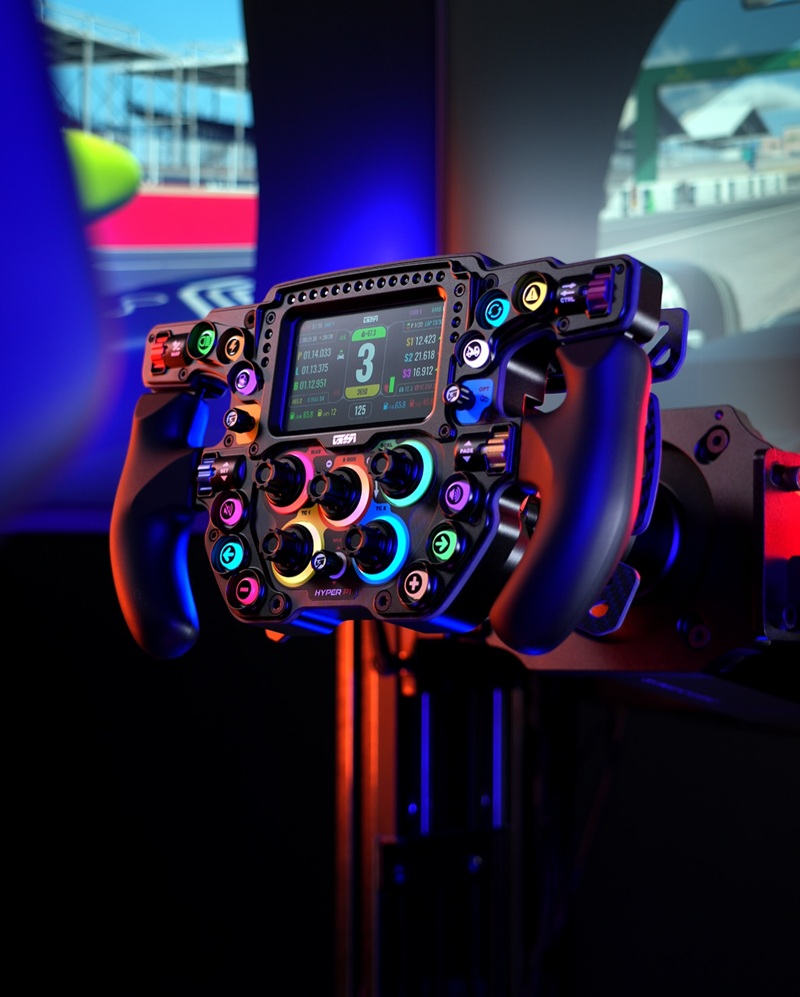
Exclusive Exhibitions and Demos: Top brands are expected to showcase the latest hardware, software, and accessories in simulation gaming, VR and technology.
Live Esports Competitions: Sim enthusiasts can watch and participate in live esports
tournaments featuring top talent and community-driven events.
Content Creator Meet-and-Greets: Fans will have the opportunity to meet popular streamers and content creators, who share their passion for simulation gaming.
Educational Workshops and Panel Discussions: Industry experts and creators will lead sessions on how to improve their skills and discuss the latest trends and developments in the world of simulation gaming.
“Sim Gaming Expo 2025 is all about bringing the simulation gaming community together to celebrate our shared passion,” said Jorge Anzaldo, owner of Immersive Entertainment, the production company behind the event. “This is a unique opportunity for fans to explore the technology and innovation driving this industry, connect with creators, and immerse themselves in an unforgettable experience.”
Anzaldo said registration is open and sponsorship opportunities are available.
Immersive Entertainment Inc. is a production company dedicated to creating dynamic, fan-centered events in the gaming industry. Committed to innovation, Immersive Entertainment Inc. produces the Sim Gaming Expo, bringing together the latest in simulation technology, gaming lifestyle, and interactive entertainment.
And, thanks to the learning side of the equation, Anzaldo is trying to connect with schools and expose them to the STEM aspects of learning simulations.
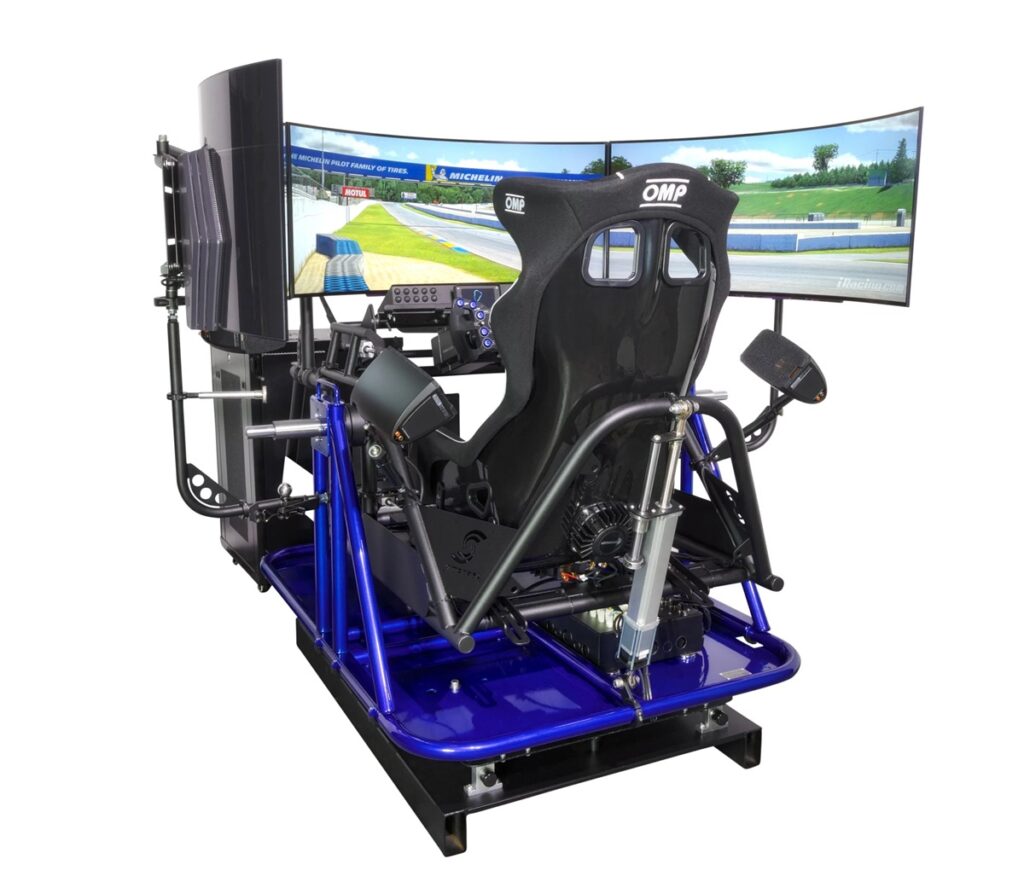
“It’s amazing. The realism that’s being brought into these simulators is just so cool to see, like with iRacing on the sim racing side. They laser scan the tracks and they laser scan the cars so they are truly a one-to-one representation” in digital form, Anzaldo said.
In addition, Anzaldo said, “We think this should be celebrated. The approach that we’re taking is that it is also a community-driven event, one that is for fans, by fans. We want it to be a gathering of people to celebrate their shared passions for all of this hardware and tech and software.”
“We’re definitely seeing where AI is being more integrated into simulations. Now, more than ever, there is a pathway from E to real where, people are into sim racing, and then they’re getting opportunities to drive real-world race cars,” Anzaldo said. “Like in the Gran Turismo movie.”
Technology
ICYMI: 5 must-reads for modernizing the marketing playbook
Planes. Privacy. Prototypes. Penalties. Pause Ads. This month’s smartest thinking comes from outside the usual marketing manual. Check out our top five picks here. New month, new batch of industry buzzwords? Maybe. But every so often, among the noise, something sticks. Something that doesn’t just repackage the same old thinking but challenges how we define […]

Planes. Privacy. Prototypes. Penalties. Pause Ads. This month’s smartest thinking comes from outside the usual marketing manual. Check out our top five picks here.
New month, new batch of industry buzzwords? Maybe. But every so often, among the noise, something sticks. Something that doesn’t just repackage the same old thinking but challenges how we define good marketing today.
Across five new premium features on The Drum this month, we’ve been working with brands to rethink what counts as premium attention, creative craft and cultural timing – and questioning whether the industry’s go-to frameworks are still fit for purpose.
This month, the recurring theme is challenging the traditional marketing playbook. From flipping forgotten channels into front-runners, to redefining creativity in an AI age, to calling time on the performance-privacy trade-off – these five stories say something about where marketing’s really heading.
1. Attention is up in the air
In-flight advertising is shaking off its legacy image and emerging as one of the most compelling – and underused – tools in the modern marketer’s playbook. And it’s not just for big brands with big budgets. Turns out, 35,000 feet above ground is one of the few places audiences aren’t swiping past your ads.
“In-flight is where the attention economy flips,” says Chris Demange, vice-president at Viasat Ads. “Passengers aren’t distracted. They’re actually looking to be entertained, informed – and connected… These aren’t just ads; they’re part of an intentional, high-impact customer journey.”
2. It’s time for the ninth P of marketing
Marketing’s favorite framework (the 4 Ps) has had more remixes than a ‘90s club anthem. From Product, Price, Place and Promotion, then came People, Processes, Packaging and Physical Evidence, then Performance. Now, it’s time for the real chart topper.
“Today, we need new principles for data minimization, informed consent and respect for digital privacy,” says Adelina Peltea, chief marketing officer, Usercentrics. “Brands don’t win because they shout the loudest, they win because they build the most trusted customer journey.”
3. AI isn’t the enemy of creativity
From how ideas are born to how campaigns are delivered, AI is upending creative production. It’s no longer a question of if AI belongs in the industry, but how brands can use it to elevate, not erode, storytelling.
“Audiences aren’t focused on how content is created. They care about the stories we tell,” says Drew Weigel, vice-president, head of innovation at Shutterstock Studios. “Blending tech is the game-changer. Hybrid workflows powered by AI and virtual production give brands the flexibility to scale fast.”
4. Timing is everything
From viral celebrations to unexpected upsets, live sporting moments unite audiences like nothing else. In a fragmented media landscape, these events offer rare, undivided attention, emotionally charged engagement – and up to 3x higher brand performance.
“Think of sports as a timeline of moments – tentpole, micro, milestone. Every one of them is an opportunity. But brands don’t need to buy the whole timeline anymore. With data and tech, they can pick their moments and own them,” says Ralf Ollig, vice-president of product, Sportradar ad:s.
5. Media meets meaning
With limited leisure time, audiences are curating content that earns their attention versus interrupts it. Amazon Ads calls these emotionally charged, intent-filled ‘quality time’ moments the new frontier of media planning. The question isn’t if brands should show up in these moments – but how to make them count.
“When brands enter the space thoughtfully, they become part of the cultural conversation, not an interruption to it,” says Dan Clancy, CEO, Twitch.
And for more expert intelligence on solving the toughest marketing challenges, check out The Drum’s Partner Insights here.
Want to go deeper? Ask The Drum
Suggested newsletters for you
Daily Briefing
Daily
Catch up on the most important stories of the day, curated by our editorial team.
Weekly Marketing
Friday
Stay up to date with a curated digest of the most important marketing stories and expert insights from our global team.
The Drum Insider
Once a month
Learn how to pitch to our editors and get published on The Drum.
-

 College Sports2 weeks ago
College Sports2 weeks agoWhy a rising mid-major power with an NCAA Tournament team opted out of revenue-sharing — and advertised it
-

 Sports2 weeks ago
Sports2 weeks agoNew 'Bosch' spin
-

 Fashion2 weeks ago
Fashion2 weeks agoEA Sports College Football 26 review – They got us in the first half, not gonna lie
-

 College Sports3 weeks ago
College Sports3 weeks agoMSU Hockey News – The Only Colors
-

 Sports1 week ago
Sports1 week agoVolleyball Releases 2025 Schedule – Niagara University Athletics
-

 Sports3 weeks ago
Sports3 weeks agoE.l.f Cosmetics Builds Sports Marketing Game Plan Toward Bigger Goals
-

 Health2 weeks ago
Health2 weeks agoCAREGD Trademark Hits the Streets for Mental Health Month
-

 Youtube3 weeks ago
Youtube3 weeks agoWill LeBron James request a trade? 🤔 Windy says MULTIPLE TEAMS would make offers 👀 | NBA Today
-

 College Sports2 weeks ago
College Sports2 weeks agoBuford DB Tyriq Green Commits to Georgia
-

 Youtube2 weeks ago
Youtube2 weeks agoWill Giannis DEPART Milwaukee⁉️ + How signing Turner & waiving Dame impacts the Bucks | NBA Today




























